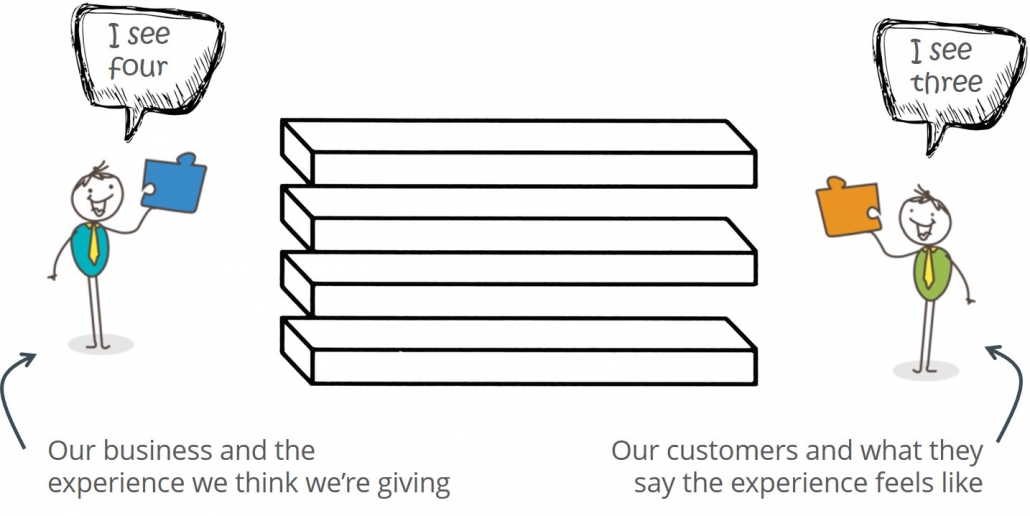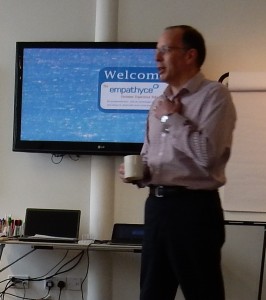(This post was created as a guest blog for Total BlueSky in August 2015)
The speed and breadth of technological change not just in the aviation world presents fantastic opportunities. The challenge however, is to take advantage of the right opportunities not just the latest opportunity. Understanding the things that passengers value most helps prioritise where investment and resource is best focused.
“We need to think like retailers, we need to be more digital” is the rallying cry in many away-day strategic planning session. After all, the retail sector is often the first roll-out new technology and in stores, online and bridging the divide between the two. 
On the flip side however, why not use technology to create an airline that retailers aspire to be like?
As passengers we are all also consumers in other markets. It is those interactions when buying a coffee, returning an item bought online or getting our telecoms provider to explain the latest bill that set our expectations. Replicating best practice creates nothing new and is soon overtaken. Even mobile, Apple and contactless payment methods quickly become established. Applying the right technology to the right problems on the other hand is a winning strategy.
That however, raises a few questions, not least in the debate about using the latest tech because we can, or using the most relevant tech.
Should our planning horizon be months rather than three or 5 years? If mobile, beacons and wearables are the answer, exactly what is the question? And if technology is so good, why do airlines automate check-in for passengers in economy yet retain the personal touch for those in business class.
It might make processing more cost-efficient but if I’m using it for the first time or it’s not working properly I’ll still expect someone there to help me. It feels very transactional, all about barcodes and processing with no apparent desire for any kind of relationship. If I fly business class one week and economy the next, I’ll be paying less but I’ll also remember how the different approach made me feel when I’m booking my next business-class flight.
So another question might be “Who is benefiting most from the technology?”. Is it the airline or airport who can leverage the benefits of data, measure processes more efficiently and drive down operating costs?
Or is it the passenger, for whom technology makes it easier to do business than with a competitor and so they return more often, spend more and tell everyone else to do the same?
At an aviation conference recently I asked a fellow speaker for their views on where technology and passenger experiences meet. Will there be a time in the not too distant future, I wondered, when I won’t be able to fly if I don’t have a smartphone? The immediate and enthusiastic response was an unequivocal “Absolutely!”.
Nothing wrong with ambition, but there’s a real risk of making the assumption that owning a smartphone means being willing and able to use it in the way that airlines want passengers to.
A large US carrier launched its lost baggage app with a big fanfare and indeed, it did shows where a bag was and how that compared with where it should be. That’s not an inconsiderable amount of time, money and opportunity cost to develop technology that is unlikely to be at the top of a passenger’s wish-list.
As a passenger, I expect my bag to make the same trip as me. I accept that problems happen and that bags do go missing or not make onto the flight. BA’s recent problems at LHR Terminal 5 highlighted that all too well. But would I download an app and keep checking it when the chances of it going missing are slim anyway and I’ve got a hundred other things to do?
On a trip to Poland recently, my bag didn’t make it. I went to the information desk and got things sorted. Having just landed in a foreign country late at night, the baggage reclaim area was not where I would have expected to try and connect to a new mobile network and rely on an app to know more than the people in the room. I would still have gone to the information desk anyway.
I put it to the airline who had developed the app that its usefulness was there, but limited. The response was that passengers always want to know where their bags are. Personally, I assume they’re where they are supposed to be but if you go to the effort of producing an app, I’m inclined to feel less confident and believe now that’s a frequent occurrence.
And, I was told, as people in transit can run through an airport quicker than bags can be processed, it’s good to check if your bag is going to make it or not. We then fell into a debate about designing (unintentional) experiences where people have to run, whether they’re fit, have just had a hip replacement, have amplified anxiety and so on.
The point is relevance.
We hear headlines that people are “always connected”. They will be connected to the things that are most relevant to them and help them do what they want to do. In the case of lost bags, I know the airline has my cellphone number – they’ve reminded me to check-in early and stock up on duty-free goods - and I know they can link the bag to its owner. So if there is an issue why can’t they get in touch with me before I even know there is a problem and solve it.
The slightly introspective approach also manifests itself in the green, orange and red “How was it for you?” buttons that greet us after security, by the gate or exiting customs.
They give a score, an indication of satisfaction at the point of interaction and add to the wealth or metrics and data. What they don’t yield is a qualitative element; why did someone tap the green button with a smile or punch the red button in frustration?
Without that, how do we know what to change? And as a customer, if I’ve already told you what I think, why should I bother telling you again when I get an email the day after travelling back?
Thinking like a retailer might be a step in the right direction and there is obviously a place for technology. But what makes the technology a good investment is the mindset and culture that it’s nurtured and developed in. For example, where everyone in the project team understands and can keep on top of how and why passengers and therefore the business will benefit.
London City Airport has a huge focus on technology but for the primary reason of making the travelling experience better. From that, they know, will flow more passengers and more revenue. And the results are testimony to that approach; passenger numbers are expected to exceed 4 million this year. Customer reviews suggest it’s the kind of airport you hope your airline will fly to. And commercially, the owners have just put the airport up for sale with an estimated price tag of £2bn.
Technology plays a huge part but I recall LCY’s chief executive Declan Collier keeping things in perspective about how it’s used in an interview with Forrester in 2013. He said “Customer experience is nothing without delivery, and in our business, our propositions stand or fall on the ability of our people to deliver them”.
Adding to the sentiment from New Zealand is Andy Lester, Chief Operating Officer of Christchurch airport. Such was the devastation of the tragic 2011 earthquake that much of the city is yet to be rebuilt. However, speaking in Barcelona about how the airport has got back on its feet, he said “We have a great opportunity … but if we think like an airport or think like an airline we won’t see things the way our customers do”.
Airlines have access to some amazing technology. Passengers have a choice about who they fly with. Understanding the two sides and bringing them together in the right way will create a winning combination.
Thank you for reading the blog, I hope you found it interesting and thought-provoking. I’d love to hear what you think so please feel free to add your comments below.
I’m Jerry Angrave, founder of Empathyce and an ex-corporate customer experience practitioner. Since 2012 I’ve been a consultant helping others understand how best to improve their customer experiences. If you’ve any questions about this or any other CX issue do please get in touch. I’m on +44 (0) 7917 718 072 or on email I’m [email protected].

Jerry Angrave




















 offer their insights on addressing others’ issues and get feedback on their own.
offer their insights on addressing others’ issues and get feedback on their own.